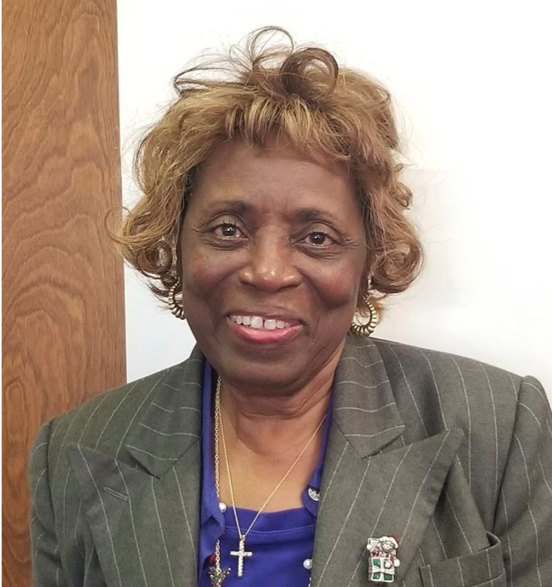The Most Competitive NC House Districts in 2020
Updated October 1, 2020
In the NC House, Democrats need a net gain of five seats to break even and six seats to take the majority. This will mean holding almost all of the current Democrat-held seats while winning in some even more challenging districts than those we flipped in 2018.
While it won’t be easy, the great news is that, with new, fairer maps in place, the goal of breaking the majority is within reach with enough funding and volunteer support for these critical races and an electoral strategy that turns out the left-leaning voters who stayed home in 2016.
Help Democrats cross the finish line! Get involved with FLIP NC’s efforts or make plans to volunteer with and/or donate to one of the campaigns – we’ve included links to their websites below.
Note: For each district below, we report (based on the current district lines) the two-party vote margin for the 2018 NC House and NC Senate candidates, the 2016 gubernatorial candidates, and an overall estimated partisan lean for 2020.
The Most Flippable GOP-Held Districts in 2020
If the gerrymandered maps used in 2018 had remained in place in 2020, Democrats would have faced a narrow path to taking the majority in the NC House that would have required a clean sweep of every district that was remotely competitive – i.e., with a Republican partisan advantage of 7 points or less.
Under the new NC House map, the path to a Democratic majority has improved in two important ways: First, the competitive landscape has broadened considerably, with 11 Republican-held districts very much in play in 2020. Second, the top targets for Democrats have become much more favorable, reducing the size of the Democratic surge needed to take the majority.
While Republicans retain a structural edge under the new maps, the NC House majority is up for grabs for the first time in a decade.
THE MOST FLIPPABLE
With many of the extreme partisan gerrymanders now eliminated from the NC House map, the first piece of good news is that Democrats are slight favorites in three newly drawn districts currently held by Republicans.
1. NC-H63 - ALAMANCE COUNTY (BURLINGTON Area), FLIP SCORE: D+4
With a new NC House map that pushes NC-H63 5 points to the left and a strong Democratic challenger, Ricky Hurtado, the chances to flip this seat are excellent.
A son of working-class immigrants, Hurtado grew up in rural North Carolina and is a product of public schools. He is a first-generation college graduate and Morehead-Cain Scholar who is now a professor at UNC-Chapel Hill.
Ricky Hurtado, NC-H63
2. NC-H9 - PITT COUNTY (GREENVILLE AREA), FLIP SCORE: D+1
Brian Farkas, NC-H9
With the elimination of the extreme Republican gerrymander in Pitt County, a strong Democratic candidate is favored to win NC-H9 in Greenville. The district leans about 10 points further left than it did in 2018; Roy Cooper carried the newly formed district by 1 point in 2016, and Democratic State Senator Don Davis won it by 2 points in 2018.
Democrats did not field a competitive NC House candidate in NC-H9 in 2018 but have a strong candidate this year in Brian Farkas, who was raised in Pitt County and works with a local architecture firm. He’s also worked for the National Institute of Environmental Health Sciences, where he specialized in emergency management measures.
3. NC-H45 - CUMBERLAND COUNTY (FAYETTEVILLE Area), FLIP SCORE: D+1
Frances Vinell Jackson, NC-H45
The new NC House map also gives Democrats a great chance to pick up NC-H45, which now leans slightly Democratic. In the precincts that make up the new NC-H45, Democratic candidates for both the NC House and NC Senate outperformed their Republican opponents in 2018.
The Democratic candidate in this district is Frances Vinell Jackson, a longtime Hope Mills resident, government planner, and professor at Fayetteville Technical Community College. Her key priorities include increasing teacher pay, assuring water safety in the Gray’s Creek area, and protecting women’s reproductive rights.
The Pivotal Districts
Democrats are roughly 3-point underdogs in the next set of flippable districts, located in Cabarrus, Forsyth, and Guilford counties. These districts have also been redrawn since the 2018 elections and will likely be key in determining control of the NC House in 2020. The great news is that Democrats have reasons to be optimistic about each of them.
4. NC-H59 - Guilford County (Suburban Greensboro), FLIP SCORE: D-3
Nicole Quick, NC-H59
Under the new NC House map, NC-H59 is about 9 points more favorable for Democrats, making it an excellent target to flip in 2020. The Republican incumbent, Jon Hardister, has slightly outperformed other Republicans in the district, but Republicans’ performance has only been possible because Democratic turnout has significantly lagged Republican turnout in the district. The great news is that 2020 primary turnout was up 20% in Guilford County over 2016, and there is ample room to reverse the slight Republican lean in this district in recent elections by building on that momentum to turn out sporadic Democratic voters here this fall.
Democrats are fielding a strong challenger in NC-H59 in Nicole Quick. Born in southeastern North Carolina, she currently resides in eastern Guilford County. Quick’s history as a business leader includes time forecasting and budgeting at Guilford Mills. When her son was diagnosed with autism, she decided to undergo training to provide daily occupational therapy for him. Quick went on to lead teacher instruction and workshops focused on working with children with autism in inclusive classrooms.
5. NC-H82 - Cabarrus County (Kannapolis), FLIP SCORE: D-3
Aimy Steele, NC-H82
Cabarrus County has been trending blue over the past several election cycles. In 2018, Democratic challenger Aimy Steele came within 6 points of upsetting the Republican incumbent in NC-H82, greatly improving on Gov. Cooper’s 2016 performance in the district – and NC-H82 has since been redrawn to be 3 points more favorable for Democrats. And 2020 primary turnout increased 32% in Cabarrus County over 2016 – a great sign for Democrats!
Steele is running again, this time with greater name recognition and a campaign organization already in place. She is a former elementary school principal and a mother of five. She wants to increase education funding, offer free preschool for all children ages 3 to 4, lower health care costs, and address her district’s opioid crisis.
6. NC-H74 - Forsyth County (Suburban Winston-Salem), FLIP SCORE: D-4
Dan Besse, NC-H74
Forsyth County has also been redrawn since the 2018 elections, and while its districts remain extremely gerrymandered, Democratic candidates lost the newly configured NC-H74 by just 3-4 points in recent elections. The newly drawn NC-H74 has been slowly trending blue, and 2020 primary turnout in Forsyth County was up 29% over 2016 primary turnout, making this an excellent target to flip in 2020. In July 2020, the Republican incumbent announced her retirement from the state legislature, making this an even better target to flip in November.
Dan Besse, the Democratic candidate, ran in the former NC-H75 in 2018 and overperformed the expected margin in that district by several points. Besse is a North Carolina native, an attorney, and a five-term Winston-Salem City Council member. Besse is focused on high-quality public schools, Medicaid expansion, jobs for working families, and clean water and air.
A Democratic Surge
Democratic turnout in the 2020 primary surged more than 30% relative to 2016 in the next two districts on our list. While these districts have a slightly more Republican partisan lean, the combination of great candidates and a large boost in voter turnout could flip these important districts for Democrats.
7. NC-H20 - New Hanover County (Wilmington), FLIP SCORE: D-5
Adam Ericson, NC-H20
Gov. Cooper lost the newly constituted NC-H20 by just 5 points in 2016, and the NC House race was just as close in 2018. The new map draws out the district’s former incumbent and draws in NC House Rep. Ted Davis, Jr. (R), formerly of NC House District 19. The pool of left-leaning voters who stayed home in NC-H20 in 2018 was about 14 points more left-leaning than the folks who came out to the polls, and the great news is that 2020 primary turnout was up 30% over 2016! This district is flippable if we can get enough left-leaning voters to the polls in November.
Adam Ericson, NC-H20’s Democratic candidate, teaches and coaches at New Hanover High School. Adam and his wife moved with their two children from Maryland to Wilmington in 2005. Ericson is committed to funding public education, addressing the current water contamination crisis, creating good jobs that generate clean renewable energy, and expanding Medicaid.
8. NC-H83 - Cabarrus County (Concord), FLIP SCORE: D-6
Gail Young, NC-H83
NC-H83, in suburban Cabarrus County, has been trending sharply Democratic over the past several election cycles. The Democratic candidates for both the NC House and NC Senate significantly overperformed Gov. Cooper’s numbers in the district in 2018, and 2020 Democratic primary turnout increased 32% in Cabarrus County over 2016!
And there is more good news: Democratic challenger Gail Young is running again in 2020. She has a strong organization and name recognition on her side as she faces off against a weak incumbent in gun-fanatic Larry Pittman. For more than 26 years, Young worked in local government and managed the budgeting and reporting for five environmental businesses. She is currently a leadership development consultant. She has spent years shining a light on the voter suppression efforts of the North Carolina General Assembly.
Within Reach
Democrats are roughly 6- to 7-point underdogs in our next set of flippable districts. While this gives Republicans a sizeable edge, a strong Democratic challenger can certainly overcome this partisan lean and win in each of these districts. Each district has its own unique factor that provides greater hope for Democrats than recent election results alone might suggest. (And in 2018, a number of Democratic challengers, including Rachel Hunt, Tess Judge, and Ray Russell, outperformed expectations for their districts by even greater margins than those needed to win in these districts.)
9. NC-H1 - BERTIE/CAMDEN/CHOWAN/PERQUIMANS/TYRELL/WASHINGTON COUNTIES (Albemarle Sound area), FLIP SCORE: D-6
Emily Bunch Nicholson, NC-H1
Black voters make up the vast majority of left-leaning voters in NC-H1, in eastern North Carolina, and the pool of untapped voters – registered voters who did not vote in 2018 – leans Democratic by almost 30 points. In recent elections, Democrats have lost this district, and underperformed in others like it across the state, as rural Black voters stayed home. Winning this district will depend on whether candidates – both locally and at the top of the ticket – can connect with and turn out the majority-Black Democratic base.
The Democratic candidate running in NC-H1 is Emily Bunch Nicholson, a native of Edenton and a mother of three young children. Nicholson is a former high school and community college educator who has served 10 counties of northeastern North Carolina for the past five years as the assistant director for the Northeastern Workforce Development Board. She is committed to growing the economy, ensuring that rural residents have access to the health care they need, and improving public schools.
10. NC-H12 - Pitt & Lenoir Counties (Kinston), FLIP SCORE: D-6
Virginia Cox-Daugherty, NC-H12
Gov. Cooper and State Senator Don Davis lost this district by just 5 points in 2016 and 2018, respectively, and the pool of untapped voters here – registered voters who did not vote in 2018 – leans Democratic by more than 20 points. This district is within reach with a surge in base turnout in the district.
The Democratic candidate running in NC-H12 is Dr. Virginia Cox-Daugherty, a retired educator and eastern North Carolina native. Dr. Cox-Daugherty’s past volunteer service includes the United Way, Greene Lamp, Banneker Literary Club, Lenoir County Board of Elections, and the Board of Directors of the Greater Kinston Credit Union. The daughter of a sharecropper, Cox-Daugherty wants to prioritize the agricultural concerns of the county.
11. NC-H51 - HARNETT/LEE COUNTIES (SANFORD), FLIP SCORE: D-7
Jason Cain, NC-H51
NC-H51 has a similar profile to NC-H1, with Black and Latinx voters comprising the majority of left-leaning voters. Like NC-H1, flipping this district will require candidates and a statewide strategy that brings the Democratic base to the polls.
Democrat Jason Cain, a 10-year Army veteran who deployed to Iraq and Afghanistan five times, is challenging Republican John Sauls in NC-H51. His platforms include expanding access to Medicaid, ending the school-to-prison pipeline by providing equal access to a high-quality education, and championing economic development in the central region.
The Most Vulnerable Democrat-Held Districts in 2020
To break the majority in the NC House, Democrats need to pick up a net of five seats, which makes defending the vulnerable seats currently held by Democrats absolutely critical. Democrats are significant underdogs in one district, NC-H66, which has been trending sharply Republican over the past decade, and face competitive races in several other key districts.
The Most Difficult to Hold
1. NC-H66 - Montgomery/Richmond/Stanly counties, FLIP SCORE: D-10
Scott Brewer, NC-H66
With the appointment of former NC District Court Judge Scott Brewer to replace longtime Democratic incumbent Ken Goodman upon Goodman’s appointment to the NC Industrial Commission, this will be the most challenging Democrat-held district to hold in 2020. The district leans Republican by about 15 points, although Goodman managed to hold his NC House seat for five terms. While this seat will be tough to hold, the good news is that Rep. Brewer is a strong candidate facing a weak Republican challenger.
Rep. Brewer’s campaign is focused on increasing teacher pay and repairing ailing school facilities, along with making health care more affordable and investing in critical infrastructure. As a judge, Rep. Brewer helped create a Teen Court in Richmond County and managed one of the most efficient family courts in the state. When he served as senior assistant district attorney, he helped create a Domestic Violence Court, where he expedited civil and criminal cases to ensure victims were heard.
Key Districts to Hold to Break the Majority
2. NC-H43 - Cumberland county (Fayetteville), FLIP SCORE: D-2
3. NC-H47 - Robeson County (Lumberton), FLIP SCORE: D+2
Kimberly Hardy, NC-H43
With the re-drawing of the maps last year, NC-H43 in Cumberland County and NC-H47 in Robeson County became significantly more right-leaning, making them competitive for 2020. Defending these districts is absolutely critical to breaking the majority. The good news is that the pool of untapped voters – registered voters who did not vote in 2018 – leans Democratic by more than 30 points in each district! With a strategy aimed at energizing their base, Democrats can hold both NC-H43 and NC-H47, opening a path to breaking the majority in the NC House.
Charles Graham, NC-H47
In NC-H43, political newcomer Kimberly Hardy pulled off an election upset to win the district’s primary, defeating 7-term incumbent Elmer Floyd with a strong and effective ground game. Hardy is running on a strong progressive agenda: high-quality, affordable health care; high-quality schools; and clean water. She is an assistant professor of social work at Fayetteville State University. A former school social worker, Hardy is dedicated to helping those who struggle and to building safe communities with opportunities to learn, build businesses, and thrive.
In NC-H47, incumbent Rep. Charles Graham is seeking a sixth term. Rep. Graham is a retired educator who now owns a medical supply and home health care business.
Rep. Graham has 31 years of experience as an elementary teacher, high school teacher, coach, and administrator. He is not only a strong advocate for North Carolina’s public school students and teachers but also for rural communities throughout the state.
Democrats Favored but Need to Defend
4. NC-H93 - Ashe/Watauga counties (Boone), FLIP SCORE: D+2
5. NC-H119 - Haywood/Jackson/Swain counties, FLIP SCORE: D+2
Ray Russell, NC-H93
NC-H93 and NC-H119 in western North Carolina share a similar profile that presents some good news and a special challenge for 2020. The good news is that Democratic incumbents Ray Russell and Joe Sam Queen flipped these districts blue in 2018 with 4- to 5-point margins despite both districts’ slight Republican lean; the challenge is that Donald Trump was especially strong here in 2016, winning both districts by over 12 points. With strong, well-organized incumbents, Democrats are in a good position to hold these key districts in 2020, but they should not be taken for granted.
Joe Sam Queen, NC-H119
In NC-H93, Rep. Russell is an Appalachian State computer science professor, known locally for his mountain weather forecasts at raysweather.com. Rep. Russell sponsored or co-sponsored 125 bills in his first term in the NC House on the issues that were the focus of his campaign in 2018, including education, health care, clean air and water, better government, and rural economic development.
Rep. Russell is committed to ending gerrymandering, protecting our state’s natural resources, and improving public schools.
In NC-H119, Rep. Queen, a sixth-generation citizen of the mountains, served his first term in the state legislature beginning in 2002. He is a farmer, an architect, a businessman, a father, and a husband who is dedicated to strong job growth, high-quality education, and health care access for all. Throughout his career in the NC Senate and the NC House, Rep. Queen has worked for a stronger economy and a better life for western North Carolinians.
6. NC-H37 - Wake County (Holly Springs/Fuquay-Varina), FLIP SCORE: D+2
7. NC-H98 - Mecklenburg County (Huntersville), FLIP SCORE: D+3
Sydney Batch, NC-H37
NC-H37 and NC-H98 in suburban Wake and Mecklenburg counties also share a similar profile. Newly elected Democrats Sydney Batch and Christy Clark flipped these districts from red to blue for the first time in 2018, each winning by less than two percent of the vote. The new maps make NC-H37 slightly more favorable for Republicans and NC-H98 slightly more favorable for Democrats, but both remain fairly competitive for 2020. The good news is that both regions have been trending increasingly Democratic over the past several election cycles; with two excellent and well-organized incumbents, Democratic chances to hold these seats look good for 2020.
In NC-H37, Rep. Batch is a family law attorney, social worker, and fierce advocate for children. During her first term, Rep. Batch has been working to raise teacher pay and support public schools so every child in NC gets the highest-quality education; ensure that all North Carolinians have access to affordable health care that includes preventative care and lower prescription drug costs; hold corporations accountable when they cause environmental disasters; and invest in renewable energy solutions for North Carolina.
Christy Clark, NC-H98
In NC-H98, Rep. Clark works as an intellectual property and business law paralegal at a law firm that she founded with her husband. Her public service experience includes serving as the North Carolina chapter leader for Moms Demand Action for two years.
Rep. Clark is working to restore education funding to adequate levels, protect North Carolinians from discrimination, defend women’s reproductive rights, expand Medicaid, enact sensible gun control measures, ensure fair elections, and protect our natural resources from corporations.
8. NC-H24 - Wilson County (Wilson), FLIP SCORE: D+4
Linda Cooper-Suggs, NC-H24
NC-H24 in Wilson County should be a relatively safe district for Democrats, but an unaffiliated candidate backed by Republicans came close to upsetting longtime incumbent Jean Farmer-Butterfield in 2018. The Democratic Party must be vigilant in defending this key seat in 2020.
Farmer-Butterfield stepped down in July 2020 after the legislature confirmed her as Gov. Roy Cooper’s nominee to join the North Carolina Employment Security Board of Review. The governor formally appointed Linda Cooper-Suggs, Wilson County's Democratic chair, to fill out the remainder of the term. A retired educator, she is seeking her own two-year term this fall.
Want to help FLIP NC break the majority? Volunteer with us, or make a donation!



























